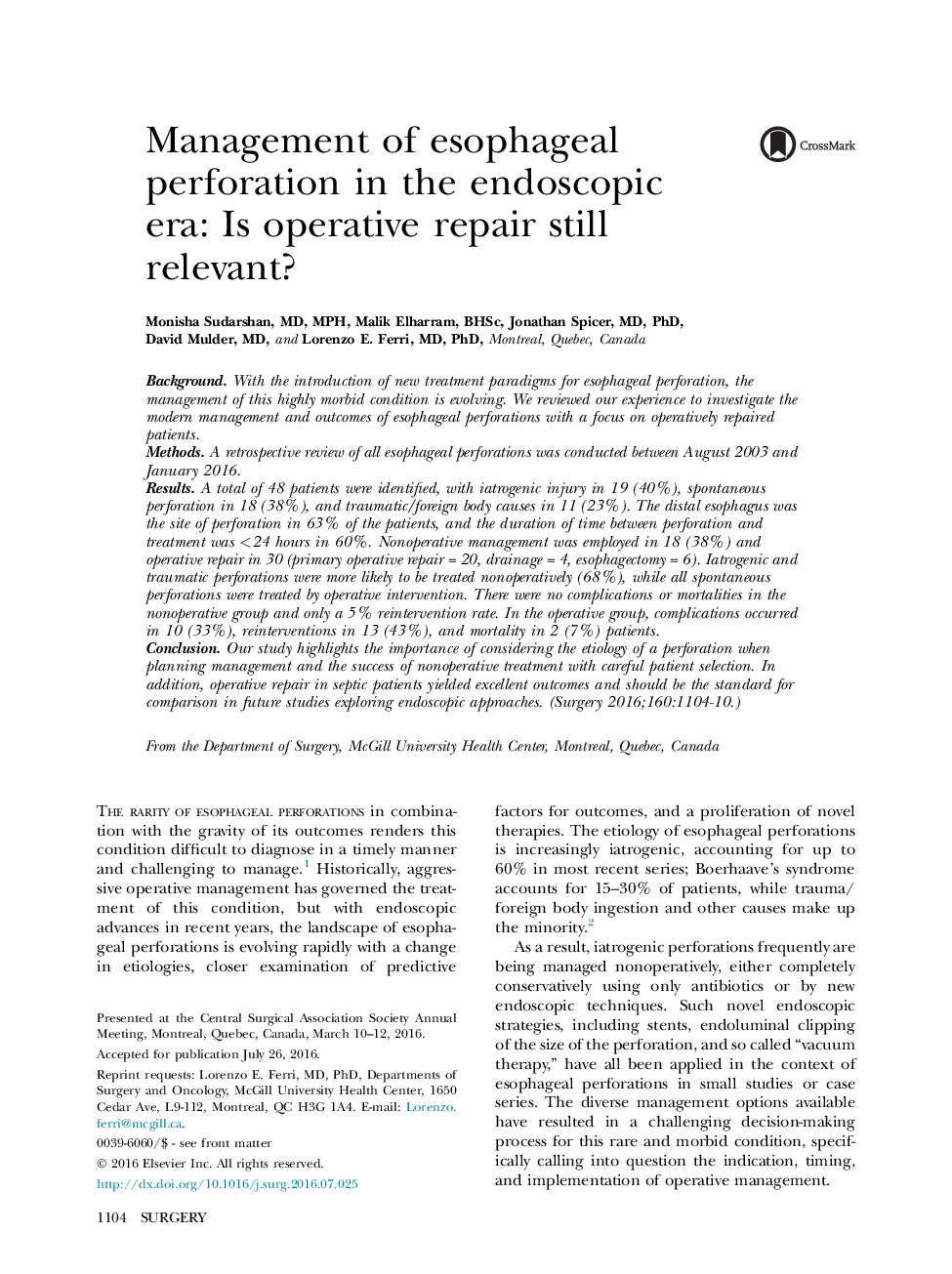| Article ID | Journal | Published Year | Pages | File Type |
|---|---|---|---|---|
| 4306387 | Surgery | 2016 | 7 Pages |
BackgroundWith the introduction of new treatment paradigms for esophageal perforation, the management of this highly morbid condition is evolving. We reviewed our experience to investigate the modern management and outcomes of esophageal perforations with a focus on operatively repaired patients.MethodsA retrospective review of all esophageal perforations was conducted between August 2003 and January 2016.ResultsA total of 48 patients were identified, with iatrogenic injury in 19 (40%), spontaneous perforation in 18 (38%), and traumatic/foreign body causes in 11 (23%). The distal esophagus was the site of perforation in 63% of the patients, and the duration of time between perforation and treatment was <24 hours in 60%. Nonoperative management was employed in 18 (38%) and operative repair in 30 (primary operative repair = 20, drainage = 4, esophagectomy = 6). Iatrogenic and traumatic perforations were more likely to be treated nonoperatively (68%), while all spontaneous perforations were treated by operative intervention. There were no complications or mortalities in the nonoperative group and only a 5% reintervention rate. In the operative group, complications occurred in 10 (33%), reinterventions in 13 (43%), and mortality in 2 (7%) patients.ConclusionOur study highlights the importance of considering the etiology of a perforation when planning management and the success of nonoperative treatment with careful patient selection. In addition, operative repair in septic patients yielded excellent outcomes and should be the standard for comparison in future studies exploring endoscopic approaches.
